Lenovo's Legion 5i is its mainstream gaming laptop. For example, the model that Lenovo sent me is the top-end of its pre-configured units, and it costs $1,599. That includes an Intel Core i7-10750H, an Nvidia Geforce RTX 2060, 16GB RAM, a 1TB SSD, and a 15.6-inch FHD 144Hz display.
Along with Intel's 10th-gen CPUs, another improvement that Lenovo made, is that you can actually have this PC configured with up to a 240Hz display. Naturally, that higher refresh rate offers lower latency and smoother gaming. Lenovo also made some improvements to the keyboard, making the trackpad 39% larger and adding an anti-oil coating to the keys.
Specs
| CPU | Intel Core i7-10750H (6C / 12T, 2.6 / 5.0GHz, 12MB) |
|---|---|
| GPU | NVIDIA GeForce RTX 2060 6GB GDDR6 |
| Memory | 16 GB 2933MHz DDR4 |
| Storage | 1TB SSD |
| Display | 15.6” FHD (1920x1080), anti-glare, LED, IPS, 300nits Anti-glare, 144Hz, 100% sRGB Gamut, Dolby Vision |
| Body | 363.06x259.61x23.57-26.1mm (14.3x10.22x.93-1.03in), 2.46kg (5.42lbs) |
| Battery | Integrated 60Wh |
| Ports | (4) USB 3.1 Gen 1 Type-A (1) USB 3.1 Gen 1 Type-C (1) HDMI 2.0 (1) Ethernet (1) 3.5mm audio in/out (1) AC power (1) Kensington lock |
| Audio | Dolby Atmos for Gaming, Harman Speakers, 2W x 2 |
| Keyboard | 6-row, multimedia Fn keys, white backlight or 4-Zone RGB LED backlight, numeric keypad, anti-ghost |
| Connectivity | 802.11ax 2x2 Wi-Fi + Bluetooth 5.0, M.2 Card |
| Color | Phantom Black |
| Material | PC/ABS plastic |
| OS | Windows 10 Home |
| Price | $1,599.99 |
Day one
Design
The design of Lenovo's Legion series hasn't changed a whole lot since the Legion Y530 came out back in 2018. It's more of an industrial design, and it's purposely designed to not look like other gaming laptops. The whole idea is that you can bring it to work with you and then you can play while you're home.

In fact, that's what the Legion 5 series is supposed to be all about. Casual gaming laptops are typically something that you'd mostly be doing other things with, and then you'd be able to play games if you feel like it. If course, this particular casual gaming notebook has Nvidia RTX graphics.

The color of the PC is called Phantom Black (although it seems more of a blue to me), and it's mostly made out of polycarbonate. In fact, it weighs in at 5.42 pounds. It still has the Legion logo along the side, and you'll be able to light up the Y, depending on the model that you get. In fact, one thing that seems to be new about this model is that it actually has some RGB lighting. Historically, you've had to upgrade to the 7 series for that. The model that Lenovo sent me still has all white lighting though.

One thing that I really appreciate is that most of the ports are on the back, and that makes cable management a lot easier. This is especially important if you've got a lot of stuff to plug in. On the back, there's a full-size Ethernet port, USB 3.1 Gen 1 Type-C, two USB 3.1 Gen 1 Type-A ports, HDMI 2.0, and a power jack.
Note that this does ship with a 230W power adapter, so charging via USB Type-C is absolutely out of the question for something like this. It's just too powerful.

On the left side, you'll find a USB 3.1 Gen 1 Type-A port and a 3.5mm audio in/out jack. While most ports are on the back for cable management purposes, the ones on the sides let you plug in peripherals on the fly.

On the right side, there's another USB 3.1 Gen 1 Type-A port.
To recap, it has four USB 3.1 Gen 1 Type-A ports, and only one USB 3.1 Gen 1 Type-C port. Sadly, there's no Thunderbolt 3, which would be great for output to external monitors. I did do some 4K gaming with this, which is easy enough with the USB 3.1 Gen 1 Type-C port or the HDMI 2.0 port, but Thunderbolt 3 would have been an improvement.
Display and audio
The Lenovo Legion 5i comes with a 15.6-inch screen that has a Full HD resolution, and you can have it configured with up to a 240Hz refresh rate. The model that Lenovo sent me is 144Hz, which is still pretty solid.

The higher refresh rate, the better your gaming performance. It's smoother, which means that you'll get that split-second advantage in seeing something. Nvidia actually demoed this for me at CES, letting me play a game at 60Hz and the same game at 300Hz. I shot zero of nine characters at 60Hz, and eight out of nine at 300Hz. If you want that competitive edge, get as high of a refresh rate as you can.

It's a matte anti-glare display, which is exactly what you want with gaming. All of the images I took were outdoors, and there weren't any glares at all. This is also at 300 nits, as that's how bright the 144Hz panel is. The 240Hz one is actually 500 nits.
It also doesn't support touch, something that you won't find on gaming PCs. This is a screen that's optimized for low latency gaming, not necessarily for looking pretty.

The bezels are pretty narrow, and the webcam on top has a privacy guard. There's no IR camera for facial recognition, and in fact, there's no fingerprint sensor. While I understand why gaming laptops don't have things like clickable trackpads or touchscreens, I have no idea why they don't have Windows Hello.
The Legion 5i has two 2W Harman speakers placed on the sides. They're tuned with Dolby Atmos for Gaming, so they sound clear and deep. They're not particularly loud or immersive though. I'm more of a headset person, but if you're not, you can always think about hooking this up to more immersive speakers.
Keyboard and trackpad
While I did use this for gaming quite a bit (I played through the entire Halo 3 campaign), I also used it for work. In fact, I actually did just what I said above, plugging in an external screen via the USB Type-C port. I wrote a lot of articles on the Legion 5i.

The keyboard has 1.5mm depth, which is the general standard for a keyboard, although I suspect that it's more common for keyboards to be more shallow these days. It also has a full numpad on the right, which I know some people want, but I'm not a fan of it. Typing on it was comfortable, and it's actually a nice combination of a keyboard that's great for gaming and one that's great for typing.

The one that Lenovo sent me is backlit, which is similar to the Legion 5 series that we've seen in the past. It's available with a four-zone RGB keyboard though, so that's something that gamers can appreciate.

One strange choice that Lenovo made here is that the trackpad is actually clickable, something that's great for productivity, but not so great for gaming. It's the same reason that you don't want a touchscreen for a gaming PC; you can't risk a false touch at a key point in a game. You also can't risk accidentally clicking the trackpad.
Other than that, the trackpad is just fine, using Microsoft Precision drivers. It's just a strange choice for Lenovo to make, when things like the design and chassis are more optimized for gaming.
Performance and battery life
You may have been wondering this whole time what the 'i' in Legion 5i stands for. It's Intel. The regular Legion 5 actually has AMD Ryzen 4000 H-series processors, and it's the first time that I've seen AMD is a standard model and Intel that has to be marked in a differentiator. I've not used AMD's H-series processors yet, so I can't tell you which one you should buy, although I will say that AMD's U-series Ryzen 4000 processors beat Intel Ice Lake in just about every way.

The Legion 5i only comes with two processor choices, the Core i5-10300H and Core i7-10750H, which are four and six cores, respectively, with eight and 12 threads. They're 45W CPUs, and they're not unlocked for overclocking. If you want overclocking, you'll have to get a Legion 7i with a Core i9-10980HK.
The two GPU options are the Nvidia GeForce GTX 1660Ti with 6GB GDDR6, and the GeForce RTX 2060 with 6GB GDDR6. While they both have 6GB of video memory, RTX still costs $100 more, because it gets you things like real-time ray tracing and DLSS. Honestly, if you're buying a gaming laptop, even a casual gaming laptop, go for RTX graphics. You probably want to keep the PC for a while, so it might be best to future-proof it a bit.
The model that Lenovo sent me has the Core i7-10750H, RTX 2060, 16GB RAM (it maxes out at 16GB), and the 144Hz screen. Battery life is just a few hours with regular usage, and that's no surprise with its powerful internals. I wouldn't recommend gaming without being connected to a power source; you'll get better performance that way anyway.
While the configurations to max out at 16GB of RAM, keep in mind that Lenovo does publish full maintenance guides, so you can upgrade as much as you want if you know what you're doing.
For benchmarks, I used PCMark 8, PCMark 10, 3DMark, and VRMark.
| PCMark 8: Home | PCMark 8: Creative |
| PCMark 8: Work | PCMark 10 |
| 3DMark: Time Spy | VRMark: Orange Room |
| VRMark: Cyan Room | VRMark: Blue Room |
The numbers speak for themselves here, and they're not surprising. This is good for anything from creative work, to games, to VR.
Assisting the performance is Lenovo's Legion ColdFront 2.0 cooling technology. It uses copper heat pipes, along with a "dual burn" feature that's meant to push the CPU and GPU harder. You can also jack up the fans by pressing Fn + Q, or you can activate it in the Lenovo Vantage app.
Conclusion
I've always appreciated Lenovo's Legion laptops, although personally, I'm more of a gaming desktop man. But Lenovo's Legion laptops are among my favorite because they fit the profile of both productivity and gaming to me. As they say, it can do both. After this redesign first happened in 2018, the first review I wrote was called "productivity in the streets, gaming in the sheets", so this time, we'll just say it's a laptop that can do both.

My complaints are mostly minor, and things that you probably wouldn't find in gaming laptops anyway. These are things like Thunderbolt 3 and Windows Hello. The clickable trackpad sadly has to be added to the list of cons. As much as I personally prefer it, it's something you really should be aware of in the world of gaming PCs.
But there's much more good than bad here. Aside from Lenovo's industrial design, it offers some high refresh rate screens, and impressive internals for the price of $1,599. But here's the best bit. The link that Lenovo sent me for this PC is from B&H, which is selling this particular configuration for $1,299 right now.
Honestly, when it comes to casual gaming, I don't know how you can beat that. It also future-proofs you a lot better than the $969 model that B&H is also offering, with the Core i7, 8GB RAM, a 256GB SSD, a 60Hz display, and an Nvidia GeForce GTX 1650 with 4GB GDDR6. For $1,299, the model I reviewed is the sweet spot.

















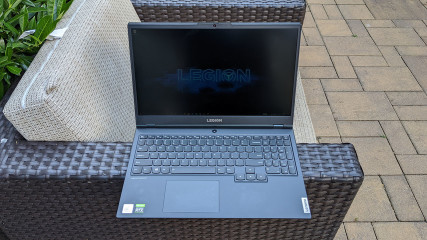
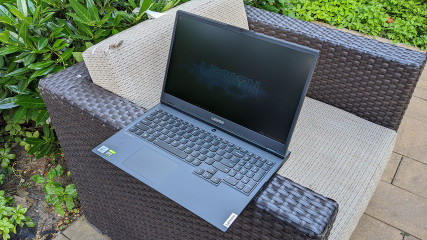


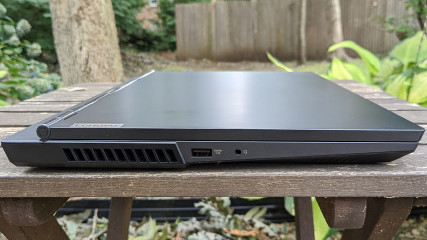
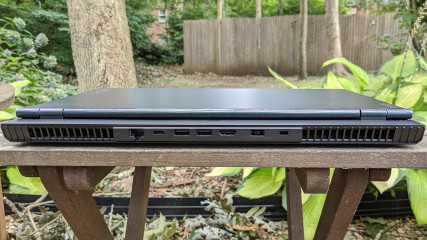
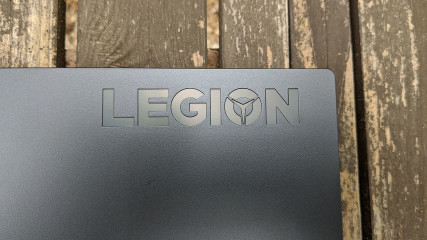
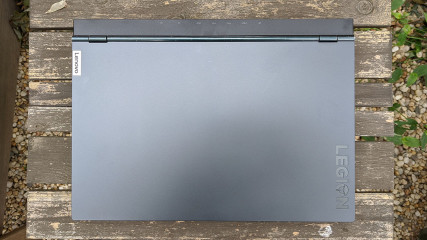
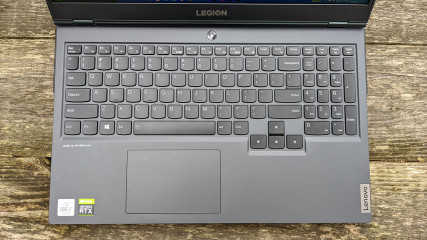
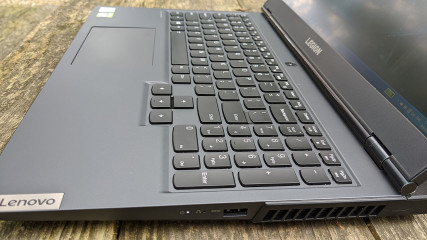
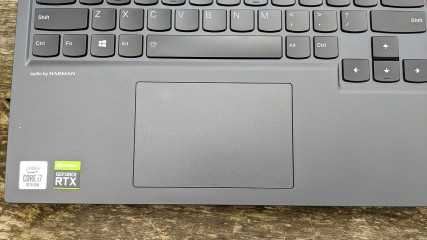
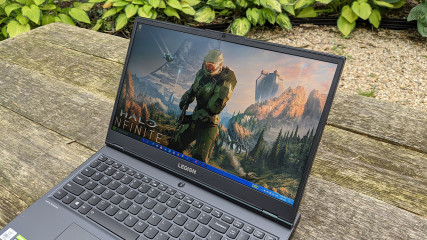
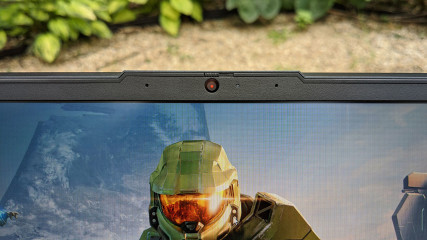


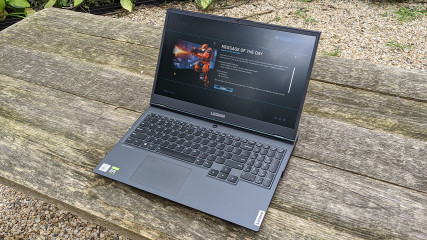
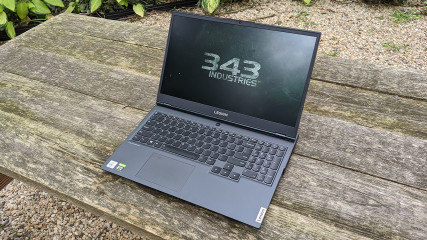
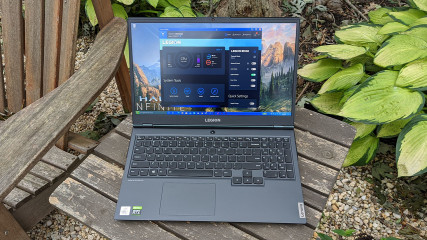
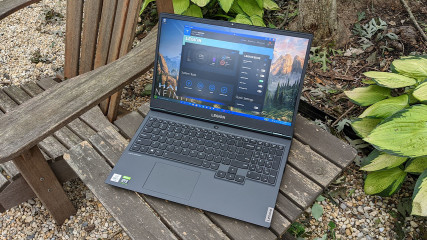









2 Comments - Add comment